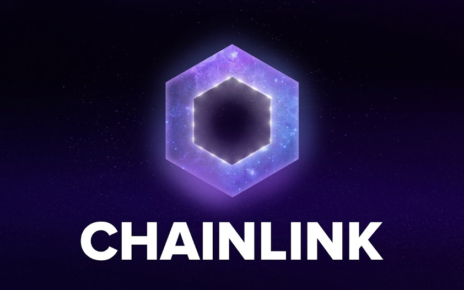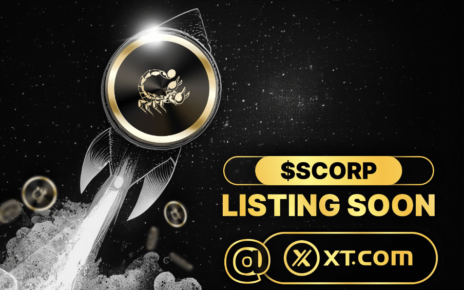Following its decision to airdrop tokens, blockchain project Celestia shot to fame earlier this month after it surged by 110%. Its unprecedented success is sending crypto users in search of other altcoins to watch out for.
According to analysts, there are options like InQubeta (QUBE), Litecoin, Cosmos, and Aptos that might follow Celestia’s bullish rally. These cryptocurrencies have proved their mettle in the past with their stellar market performance and global outreach. Their performance has set the pace rolling for what is expected to be an eventful market rally in the future.
1. InQubeta: Leveraging decentralization for AI startups
InQubeta is an Ethereum-powered platform that connects artificial intelligence-based startups with potential investors. Many analysts are impressed by its unique utilities and ability to earn passive income for its long-term holders.
InQubeta has bagged a spot in every leading analyst’s best cryptocurrency ICO list after its presale funding crossed $4.7 million recently. There are still a few presale stages left in the ICO, and experts believe that the number is likely to go higher in the coming months.
InQubeta is a versatile cryptocurrency that can take care of the needs of different kinds of crypto users. It caters to concerns about security and privacy but also makes its patrons financially independent.
Many experts believe that by choosing InQubeta, users can forget all worries about what cryptos to buy now. The platform has rolled out its native cryptocurrency known as the QUBE token which is used for making all payments and giving out all rewards within the ecosystem. QUBE can be easily bought on presale at very attractive prices. It could soon rally once it gets listed on mainstream exchanges.
With a total stock of 1.5 billion coins, the QUBE token’s supply is spread out between different use cases that can amplify its future growth.
Holders can also earn a passive income via InQubeta’s staking services. QUBE token holders can stake it to secure the network and be rewarded by the InQubeta team. The rewards that they get will also be in terms of the QUBE token and will depend on how long the asset is staked. The staking rewards are given out from a rewards pool that is funded by tax proceeds collected by the platform.
Any important decisions concerning InQubeta’s operations are taken by all stakeholders as there is no central authority to run the platform. Usually, community members pitch any ideas that they might have as proposals which are then discussed by other stakeholders to assess their impact. Later, they are put to a vote where QUBE token holders use their voting privileges to decide if a proposal is worth being implemented.
The QUBE token has a deflationary model. The anti-inflationary mechanism regularly regulates supply to keep price fluctuations at bay. As a rule, the InQubeta team ensures that the QUBE token supply stays below the demand. This keeps the asset value stable and boosts the confidence of people in the cryptocurrency. If the supply increases, it’s immediately brought down by destroying the excess tokens.
InQubeta has created a simple-to-understand and user-friendly mechanism for startups and investors so that they can have a seamless experience. The only formality that startups have to complete is submitting a rewards-based offer for investors.
The offer contains details about what investors can look forward to should they choose to invest in the startups. Next, they are tokenized and put up on display for investors in an online marketplace. Here, investors can compare and buy the offers represented by the NFTs using QUBE tokens. As these NFTs can be fractionalised, buyers can purchase a smaller part of the asset too.
Join InQubeta Presale
2. Litecoin: A “lighter” version of Bitcoin
Rated as one of the altcoins to watch out for this year, Litecoin enables businesses to offer lightning-fast crypto payments and boost their operational efficiency.
With a native cryptocurrency called the LTC token, Litecoin has emerged as a budget-friendly option for enterprises to offer fast and secure payment services. Its makers released it as an open-source crypto project.
Litecoin was developed as a fork of Bitcoin but over the years it has evolved to offer several new features. Its founder, Charlie Lee, was a Google employee who set out to create a “lighter version” of Bitcoin. The differences between Litecoin and Bitcoin are mainly in terms of hard cap, block transaction times, and hashing algorithm, among other factors.
A notable USP of the LTC token is its low block time. Coupled with a nominal transaction fee, a low block time of 2.5 minutes is the perfect combination for enterprises offering micro-payments or using point-of-sale machines.
The combination of high speed and cost-effectiveness has given Litecoin an edge over other altcoins as well. Within the Litecoin ecosystem, all transactions are authenticated in a few minutes at negligible fees. It is this edge that has helped Litecoin emerge as a substitute for Bitcoin.
Litecoin leverages the proof-of-work consensus algorithm for validating transactions without any errors. All new tokens are generated via a process known as mining. Mining of LTC tokens curbs double-spends and other cyber attacks.
Despite the upheavals in the crypto market earlier in 2023, Litecon has managed to hold its ground with several new initiatives. Experts have lauded the LTC token as one of the best cryptocurrencies due to its potential for future growth. Experts believe that LTC could be on its way to a bullish rally soon as whales have been accumulating huge quantities recently.
3. Cosmos: Demystifying dApps and blockchain tech
Cosmos has been designed as a platform that can counter the proof-of-work protocols that tend to be expensive, unscalable, and detrimental to the environment. Its wide array of cutting-edge features can help to boost the mainstream adoption of blockchain technology.
By demystifying dApps, the Cosmos network makes blockchains less complex and more developer-friendly in the long run. It is powered by the Inter Blockchain Communication Protocol (IBC) that facilitates interoperability among networks and curbing fragmentation. Its native token is ATOM and it comes in handy while dealing with all transactional obligations within the network.
The ATOM token can also be staked to earn a passive income for its users. Based on the proof-of-stake consensus algorithm, the platform allows its token holders to stake their digital assets and earn crypto rewards. Staking has a two-fold advantage – it secures the network by confirming transactions and maintains liquidity. For authenticating the transactions, token holders are also rewarded with cryptocurrencies.
Cosmos is made up of three layers, each of which has a different purpose. The first layer is the application layer where transactions are processed and the state of the network is updated. The networking layer, the second layer, paves the way for communication between blockchains and transactions. The third layer is the consensus layer. The three layers work together via a suite of open-source tools.
What sets Cosmos apart is its focus on modularity which enables developers to build new applications on pre-built code. Over time, it is expected to make it easier to deploy complex dApps.
Cosmos has been making rapid strides in the Web 3.0 space with many new products. Recently, it was in the news due to the rollout of ‘Eden’. Eden can tremendously improve the performance of blockchains by catalyzing consensus flexibility, introducing AutoCLI, and making the developer experience less complex.
4. Aptos: Solving real-world user problems with blockchain
A Layer 1 blockchain, Aptos enables developers to explore blockchain-powered tools that can solve real-world problems. The Layer 1 blockchain runs on Move which is a Rust-based language for smart contracts programming.
Aptos was independently created by a team of engineers from Meta. Its native token is APT and it’s used for various transactional purposes on the network.
Theoretically, Aptos can achieve a throughput of around 150,000 transactions in a second. The high throughput, which is sometimes even higher than that of Ethereum, is due to a parallel execution engine.
The engine is a byzantine fault-tolerant consensus mechanism based on the proof-of-stake protocol. Most blockchains process transactions in a sequence. So, even if a transaction fails or there is high demand, the entire network could be held up.
In Aptos’ case, these transactions are executed parallelly and validated later. If any transaction fails, it is either aborted or attempted again. This is made possible by Aptos’ transactional memory libraries which zero in on conflicts and then manage them.
As Move powers Aptos, it can offer the benefits of another EVM-based language called Solidity. These advantages include the ability to modify private keys and design and give blockchain commands that can be authenticated.
Another key feature of Aptos is horizontal throughput scalability which paves the way for enhanced configuration and upgradeability. The horizontal throughput scalability is made possible due to Aptos’ sharding feature and ensures a seamless experience for users.
SK Telecom, which is among South Korea’s largest wireless carriers, recently announced a partnership with Atomrigs Labs and Aptos Labs. As part of the tripartite agreement, Atomrigs Labs would serve as the technology partner.
The partnership would boost popular mainnets, dApps, and SK Telecom’s Web 3.0 wallet. Incidentally, the collaboration marks the first instance where SK Telecom would be partnering with a non-Ethereum virtual machine blockchain.
The telecom carrier has stated that by leveraging Aptos MoveVM feature it looks forward to ramping up the reach of its Web 3.0 services.
Conclusion
As 2023 draws to an end, analysts are busy reflecting on the best-performing cryptocurrencies of the year. As per experts, InQubeta, Litecoin, Cosmos, and Aptos are well-positioned to continue their growth momentum in 2024.
These cryptocurrencies offer a complete package to their users ranging from a robust code architecture to complete decentralization and diverse utilities. Even if you are looking to simply diversify your portfolio, these four tokens are some of the best cryptocurrencies to buy.
Crypto users should do their own research before purchasing a token. By finding out more about a token, crypto users can identify potential risks associated with a crypto project and make well-informed decisions.
Visit InQubeta Presale
Disclaimer: This is a paid release. The statements, views and opinions expressed in this column are solely those of the content provider and do not necessarily represent those of NewsBTC. NewsBTC does not guarantee the accuracy or timeliness of information available in such content. Do your research and invest at your own risk.





